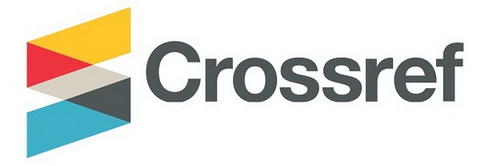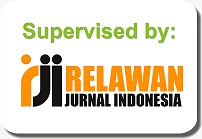Instagram Story Sebagai Bentuk Self Disclosure Bagi Mahasiswa Ilmu Komunikasi Fakultas Ilmu Sosial Dan Ilmu Politik Universitas Muhammadiyah Jember
Abstract
Self disclosure is one of the keys to success of interpersonal communication. Because in self disclosure, communicators will express some things about themselves to the communicant. In this case, some of the students of the Communication Sciences of the Faculty of Social and Political Sciences of the University of Muhammadiyah Jember expressed themselves through the Instagram Story application feature, which Instagram is a social media which is a public space and can be seen and accessed by many people. Therefore, it is necessary to know how to use Instagram Story and how self disclosure is carried out through the Instagram Story application feature among students of the Communication Studies Program at the Faculty of Social and Political Sciences at Muhammadiyah Jember University. The focus of this study was to find out how self-disclosure was carried out by students of the Communication Sciences Faculty of Social and Political Sciences, University of Muhammadiyah Jember. To describe the focus of the study, the research method used in this study is descriptive qualitative, with data collection methods in the form of interviews with several 2015 Communication Studies students, class 2016, batch 2017, and batch 2018. The technique for determining the data sources that researchers use is snowball sampling, where the researcher chooses one Communication Science student who will be the key informant to then provide instructions, who are the informants from the Communication Science students who are competent to provide data.
The results obtained from this study are the first, students of the Faculty of Social Sciences and Political Science Communication Study Program at Muhammadiyah Jember University always use Instagram Story every day. Some of them even share content every day to Instagram Story, some only open their accounts every day to see posts from their friends without sharing content to Instagram Story. Second, self disclosure carried out by students of the Faculty of Social Sciences and Political Sciences Communication University of Muhammadiyah Jember is 1) Open Area, 2) Blind Area, 3) Hidden Area, 3) Unknown Area. Open areas and hidden areas are the areas most frequently carried out by informants in this study, almost all informants were included in the area. In the blind area there were only a few informants, and in unknown areas none was included, because in this area it was explained that there was information about informants that were not known to informants and even other people through Instagram Story. To explore this area, intense and intimate interactions can be carried out. However, this does not apply to self-disclosure through Instagram Story, because Instagram Story is a public space that can be seen anytime by anyone.
Keywords: Interpersonal Communication, Self Disclosure, Social Media, Instagram Story.
Full Text:
PDFReferences
Asandi, Q., Rosyidi. 2010. Self Disclosure pada Remaja Pengguna Facebook. Jurnal Penelitian Psikologi. Vol. 01, No. 01.
Baihaqi, MIF. 2008. Psikologi Pertumbuhan. Bandung: Remaja Rosdakarya.
Cangara, Hafied. 2010. Pengantar Ilmu Komunikasi. Jakarta: Rajagrafindo Persada.
DeVito, Joseph. 1997. Komunikasi Antarmanusia. Jakarta: Professional Books.
Effendy, Onong Uchjana. 2006. Ilmu Komunikasi; Teori dan Praktek. Bandung: Remaja Rosdakarya.
Fisher, B Aubrey. 1978. Teori-Teori Komunikasi. Bandung: Remaja Rosdakarya.
Globe, F. 1997. Mahzab Ketiga Psikologi Humanistik Abraham Maslow. Yogyakarta: Penerbit Kanisius.
Liliweri, Alo. 2011. Komunikasi Serba Ada Serba Makna. Jakarta: Kencana Prenada.
Mahendra, Bimo. 2017. ”Eksistensi Sosial Remaja Dalam Instagram (Sebuah Perspektif Komunikasi)”. Dalam Jurnal Visi Komunikasi Vol. XVI. No.01, Mei 2017: 151 – 160.
Mulyana, Dedy. 2000. “Ilmu Komunikasi Suatu Pengantar”. Bandung: Remaja Rosdakarya.
Nasrullah, Rulli. 2014. Teori dan Riset Media Siber (Cybermedia): Edisi Pertama. Jakarta: Kencana Media Group.
Pamuncak, Dimas. 2011. Pengaruh Tipe Kepribadian terhadap Self Disclosure Pengguna Facebook.Jakarta: Fakultas Psikologi Universitas Islam Negeri Syarif Hidayatullah.
Rakhmat, Jalaludin. 1985. Psikologi Sosial. Bandung: Remaja Rosdakarya
Rakhmat, Jalaludin. 2016. Psikologi Komunikasi. Bandung: Remaja Rosdakarya.
Stewart L. Tubss, Sylvia Moss. 2008. Human Communication: Prinsip-Prinsip Dasar Buku Pertama. Bandung: Remaja Rosdakarya.
Sugiyono. 2014. Metode Penelitian Kuantitatif Kualitatif dan R&D. Bandung: Penerbit Alfabeta.
Supratiknya, A. 1995. Komunikasi Antarpribadi. Yogyakarta: Penerbit Kanisius.
Tamburaka, Apriadi. 2013. Literasi Media: Cerdas Bermedia Khalayak Media Massa. Jakarta: Penerbit Kencana.
Vivian, John. 2008. Teori Komunikasi Massa: Edisi Kedelapan. Jakarta: Penerbit Kencana.
Wiryanto. 2004. Pengantar Ilmu Komunikasi. Jakarta: Penerbit Gramedia.
https://unmuhjember.ac.id
Diakses pada tanggal 10 Desember 2018
DOI: https://doi.org/10.32528/mdk.v2i2.1928
Copyright (c) 2019 MEDIAKOM








